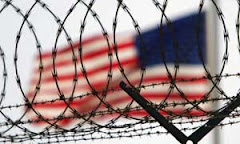Last week the New York Times provided an editorial a right without a remedy asking the supreme court to accept cert in the case commonly known as Kiyemba (link to Petitioner's reply brief). The long and the short of the issue is that the supreme court held in 2008 that habeas corpus can be utilized by the men at Guantanamo to challenge their detention. It seemed a great (if late) victory for the many men who had already been held at Guantanamo for more than six years. But the DC Circuit court- which happens to be the only appellate court to hear Guantanamo habeas cases continues to refuse to give life to any of the Supreme Court decisions regarding Guantanamo. In the Kiyemba case the DC Circuit held that yes, the men can file habeas cases-but winning those cases does not mean the men necessarily will be released. In particular, one judge on the court, Judge Randolph -who somehow, even though he is on senior status-seems to be the writer of a great many of the guantanamo decsions from that court- is particularly hostile to the notion that the Supreme Court has the final say in these matters.
Following the NY Times editorial Jonathan Hafetz reflects on both the editorial and the DC Circuit in this must read:



